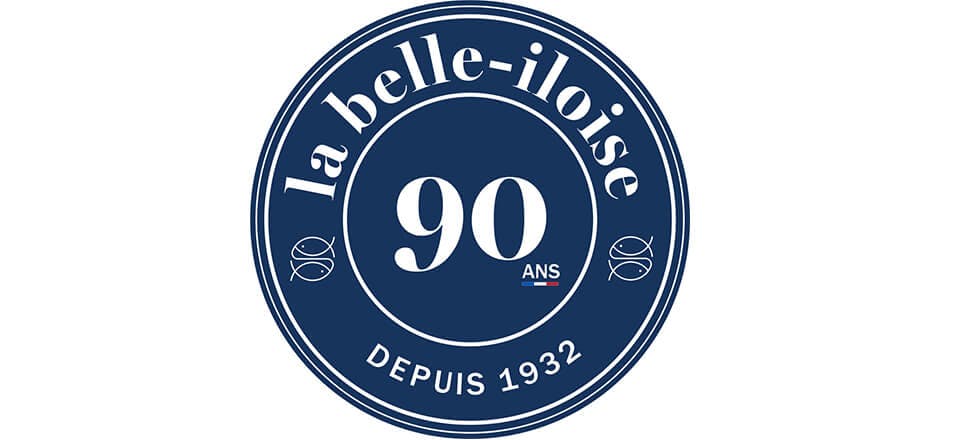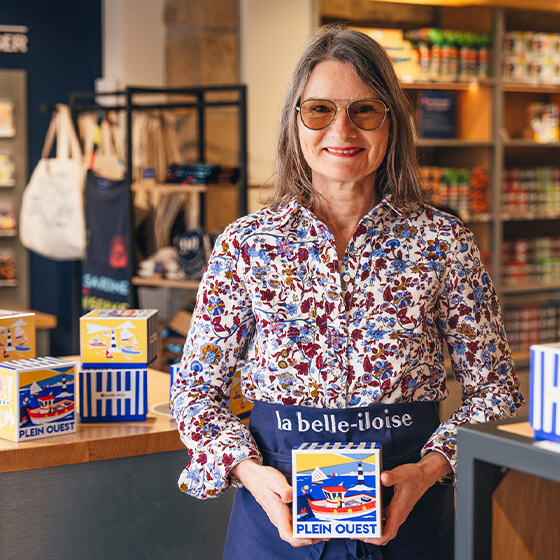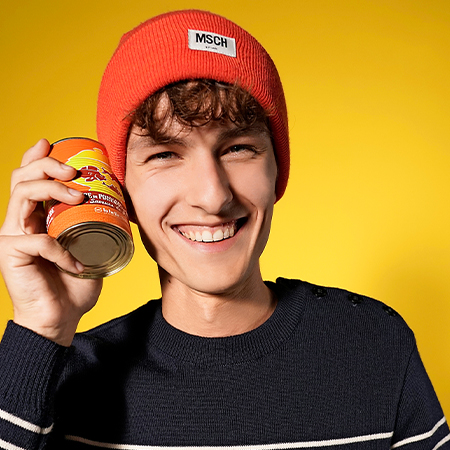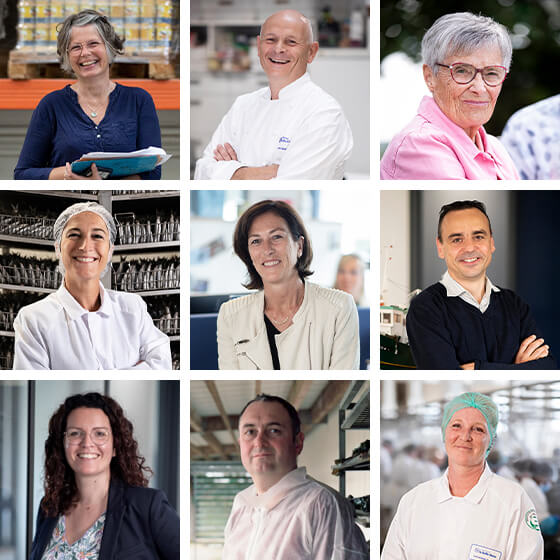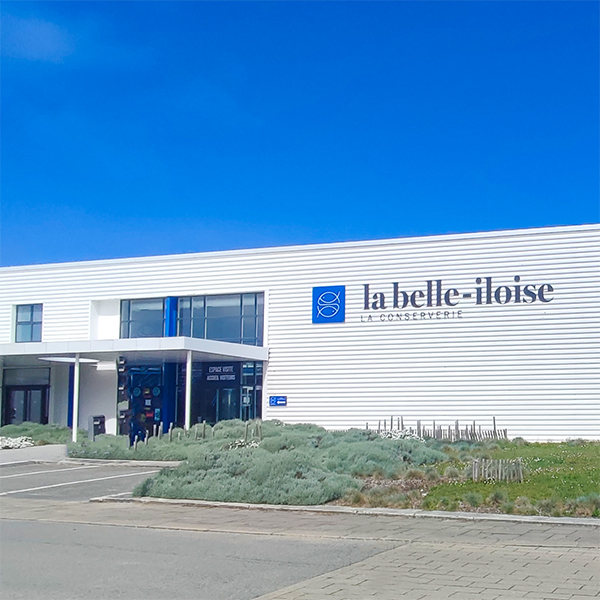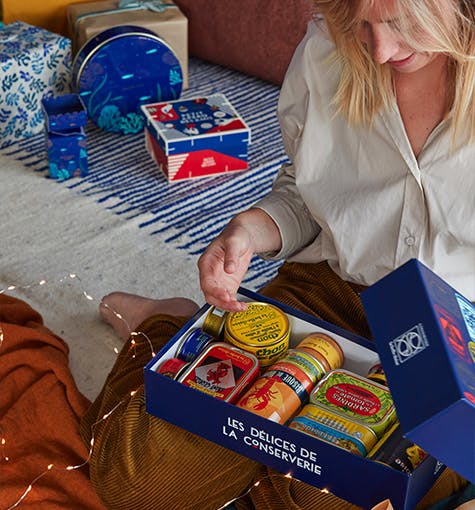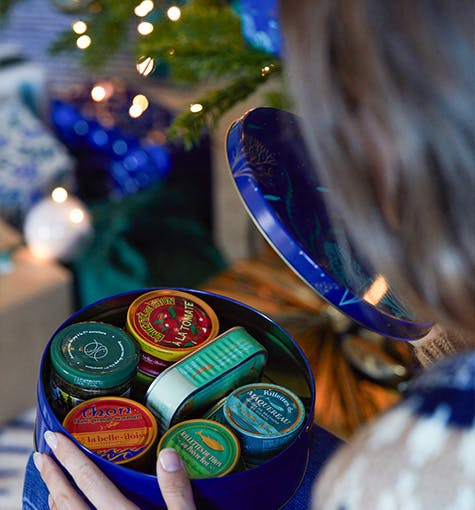Celebrating 90 years! #9: The Odyssey of la belle-iloise stores by Bernard Hilliet
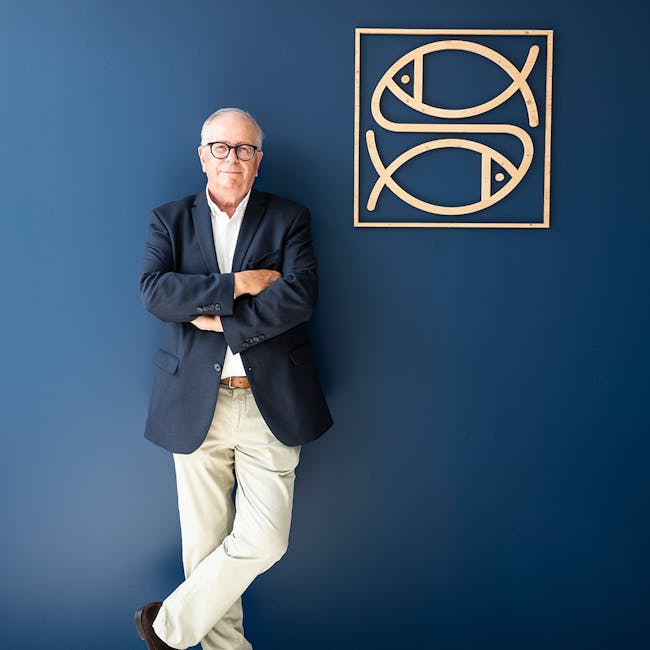
Celebrating 90 years of existence by sharing the stories of the men and the women who have made, and continue to make, la belle-iloise. Meeting them, asking them questions, going through their lives. That's what we're bringing you, in images and words, to spend a moment together on this anniversary.
For the 9th portrait of the year, we take you to meet Bernard Hilliet, who headed la belle-iloise from 1972 to 2011. A few weeks before Christmas, he takes us through the odyssey of la belle-iloise stores...

BERNARD HILLIET
At the end of 1967, Bernard Hilliet was only 20 years old when he joined the cannery founded by his father, Georges Hilliet. The young man was looking for his path in life, and Georges invited him to join the small factory in Port-Maria, the fishing port of Quiberon, to start out in the world of work. “You’ll learn a lot,” he said, “come join us!”
Ever the visionary, Georges was quite right about that. Bernard found his mark and dedicated his entire working life to the family company.
“As a teen, I had no love for school. My grades were truly awful, so I didn’t believe in myself. I genuinely felt that I was good for nothing. But when I started working at la belle-iloise, everything fell into place. Finally, I realised that I could do things, and that gave me confidence,” Bernard told us.
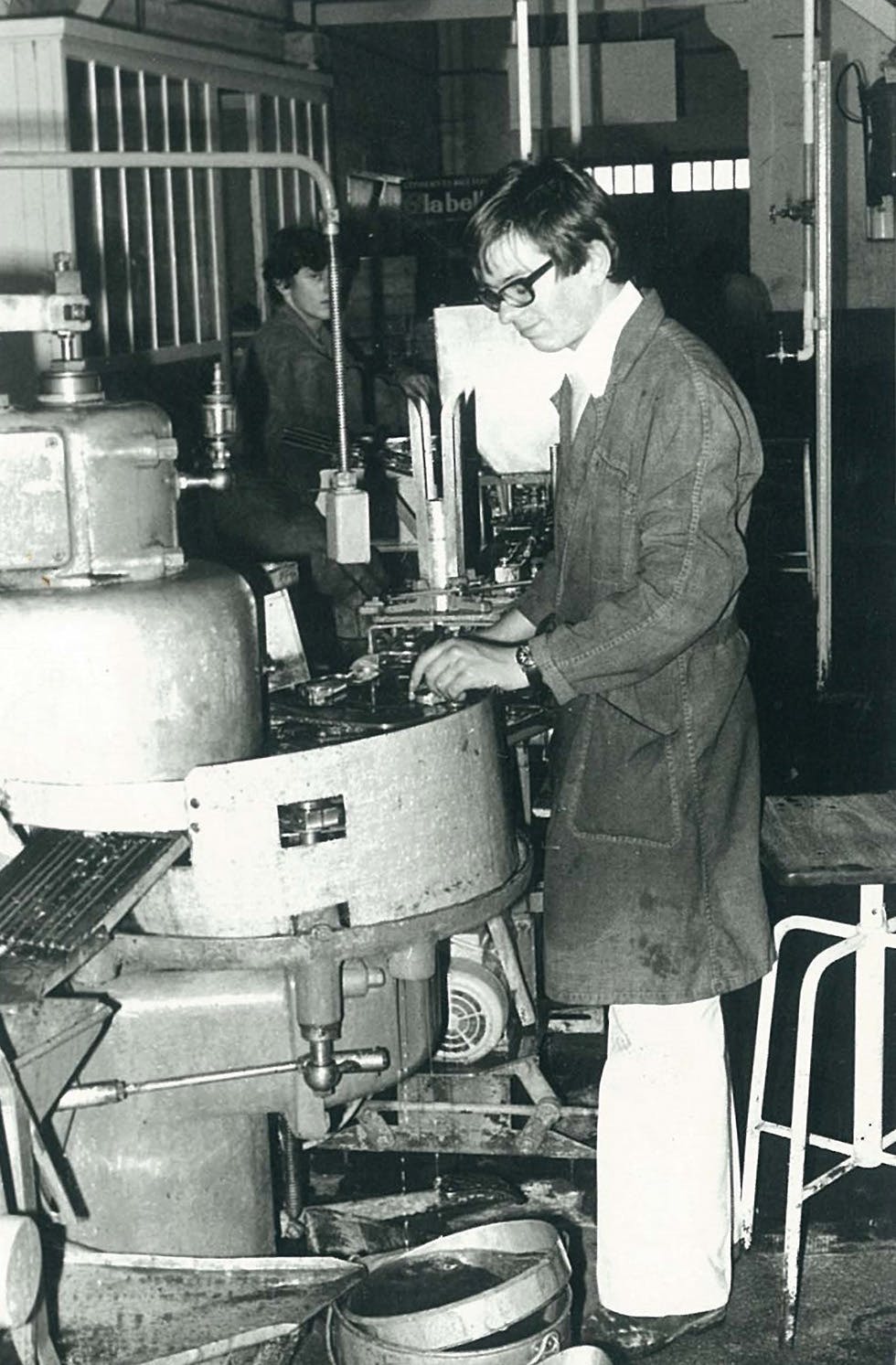
Bernard Hilliet starting out in the Port-Maria factory in 1967.
In 1969, his father needed rest, so Bernard found himself alone at the helm of the ship, handling the company’s daily operations at just 22 years old.
“I took on all the facets of company life head-on —the good sides, the bad ones, and the difficulties the company encountered.Every day there were challenges to address, and that suited me fine. I took more and more pleasure in managing my work and teaming up with others. I thought about the customers and the good of the company. At last, I felt a sense of fulfilment!”
In 1972,his older brother —also named Georges—joined him, and the two brothers managed la belle-iloise jointly for 23 years. Together, they created a network of direct-to-consumer stores in the most beautiful of regions along the northern part of the French Atlantic coast.
“I had always got on like a house on fire with my brother. There was never any competition between us; instead a lot of respect. We each had a job to do, specific tasks within the company, but we took all decisions jointly. I have fond memories of those years together at la belle-iloise and outside too. We shared the same hobbies; we liked to sail and go on holiday together, and our children grew up alongside one another. We were incredibly close.”
From 1995 to 2011, after Georges retired, Bernard continued to expand the la belle-iloise stores, which he had started with his brother. In 2006, his eldest daughter, Caroline, our current CEO, joined the company to ensure its succession.
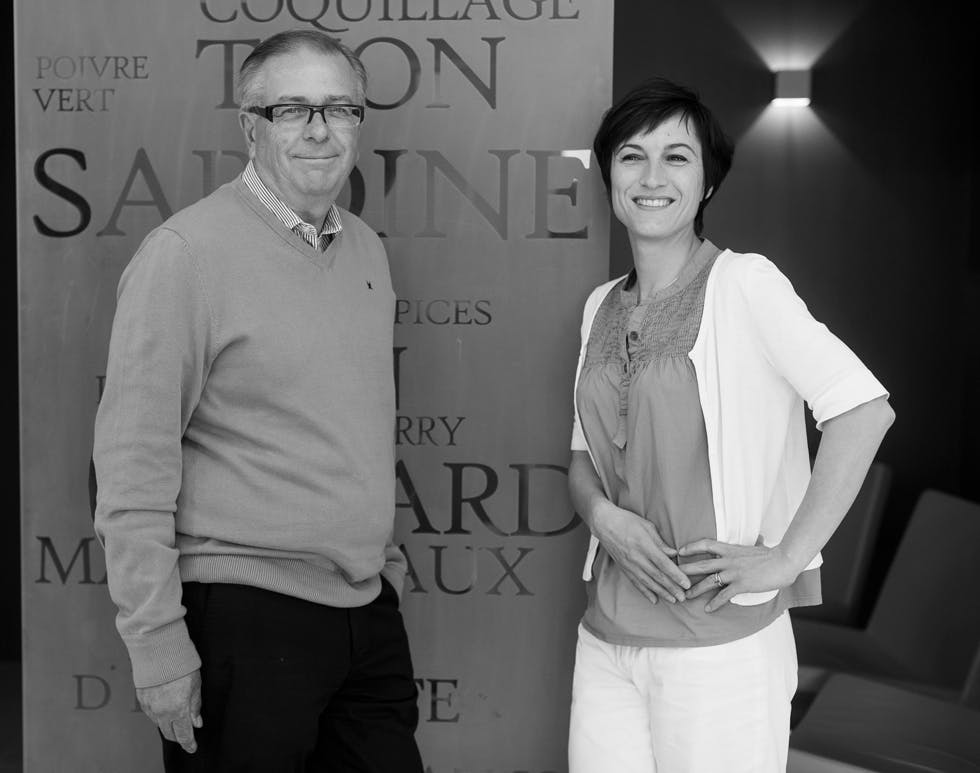
Bernard and Caroline went on to work together from 2006 to 2011.
The transition would last for five years: “I wanted to share as much of my experience so that she [Caroline] would be well-armed when the moment came –like my father had done for my brother and me, and it all went really smoothly!”
When Bernard took his retirement and passed the company over to Caroline, la belle-iloise had 50 stores.
- This year, la belle-iloise is celebrating its 90th anniversary with 90 stores.You must be pretty proud, aren’t you?
When I see how far we’ve come since my father set up the first store, of course I’m proud, incredibly proud. Now, 54 years on, there are 90 stores, serving as a real springboard for la belle-iloise. Each generation has done its bit. Wehave been able to optimise distribution over time.
Don’t forget; la belle-iloise has never had to forgo the quality of its goods because it has a solid network of own-brand stores. I’m also proud that we have preserved the quality of our goods for 90 years. From one generation to the next, we have succeeded in protecting and upholding the company’s key values to prolong and maintain my father’s original vision.
- As time goes by, what has most stood the test of time at la belle-iloise in your opinion?
If you compare la belle-iloise’s values today with those from the beginning, one core value stands out the most: respect —respect for the product, suppliers, customers, and nature and its seasons.
We always work in the belief that you don’t cheat or tell lies. We tell things as they are and deeply respect one another. This respect is an inherent part of things at la belle-iloise. It has always existed. My generation grew up with it, as did my father’s before, and we still have it now.
THE BEGINNING OF DIRECT SALES
- Tell us about the start of the la belle-iloise stores.
My father was the one who wanted to set up the first la belle-iloise store. I remember its opening very well, right in the very heart of the factory. It was June 1967, just a few months before I joined the company.
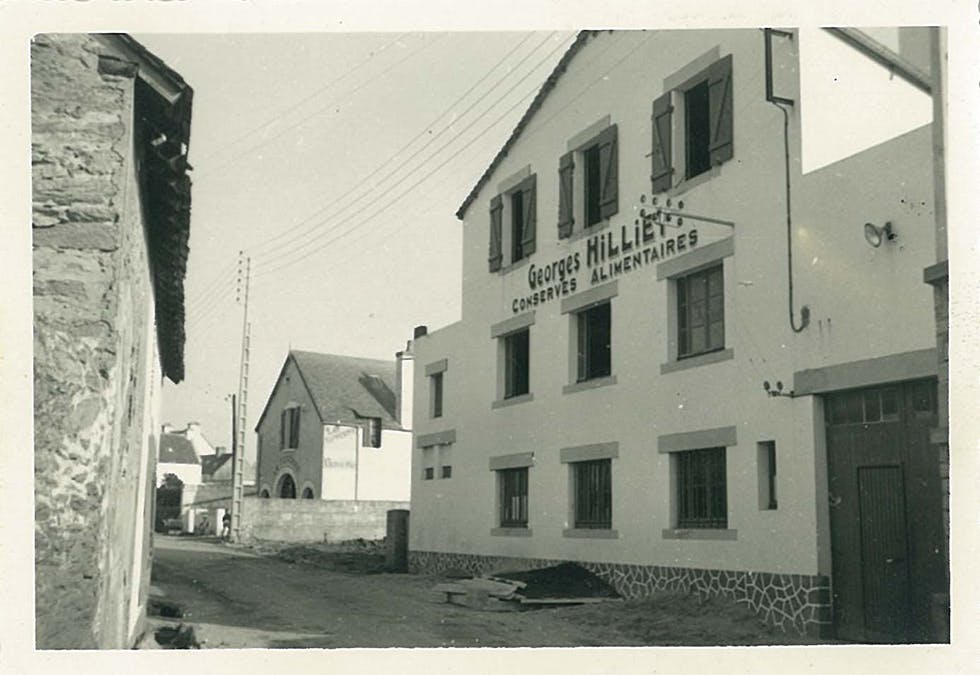
The Port-Maria factory, before the first store made its appearance.
As a manufacturer of tinned fish, my father had the foresight to reinvent tinned goods distribution circuits at just the right time. Back then, canneries only sold their goods via resellers, predominately grocery stores. After all, it was the 1960s, the beginning of an age of plenty. But supermarkets made their entrance in France, and people’s minds were fixated on maximum productivity for the lowest price. The competition was becoming ever fiercer.
With grocery stores giving way to supermarkets, my father felt that the commercial logic of canneries up until that point was ending. Adapting to this new mode of distribution meant squeezing prices to the detriment of product quality. But for my father, that was out of the question: “If I have to, I’ll sell my sardines on the beach!” he declared.
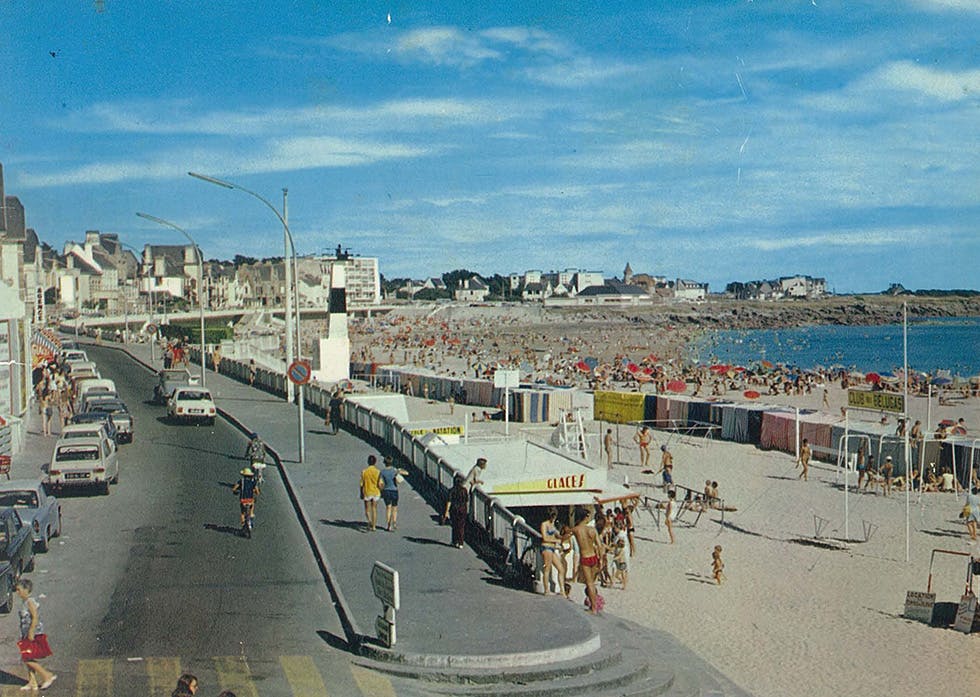
The Grande Plage in Quiberon in the 1960s.
Quality is what drove him. The rationale for his work and the company was to manufacture high-quality goods. Abandoning that would have been synonymous with cheating for Georges, and the idea of tricking his customers was unbearable for him.
So he cleared out an area at the far end of the factory, a tiny room which was pretty much a cloakroom up before then, with a door that opened out onto Rue de Kervozes, right next to the seaside. He set up a few shelves with his tasty tins that he would sell in boxes of 20. In June 1967, Georges hired a saleswoman for the season, and the first la belle-iloise store opened its doors!

The Port-Maria store and its beginnings.

The store setup was simple: a few shelves behind the saleswoman and her till.
My father was a visionary doing all that. He had the necessary drive to do it and dared to go for it. Having distanced himself from the large retail outlets, he invented direct-to-consumer sales of tinned products. It’s what has made la belle-iloise what it is. Had he not done that, the company probably wouldn’t be here today.
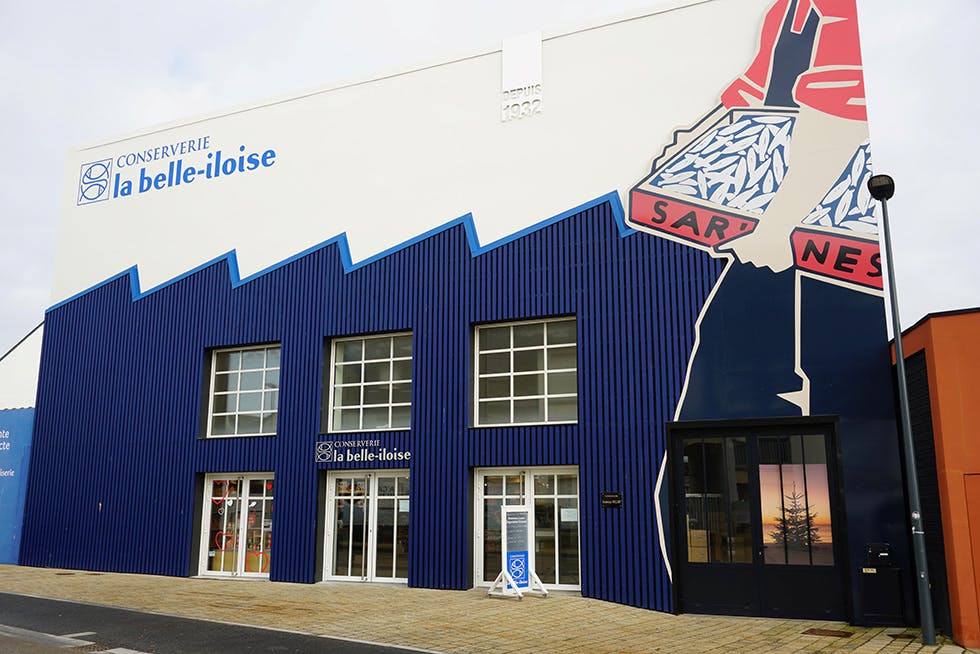
The Port-Maria store now.
OUR STORES
In 1972, Bernard and Georges came up with the idea of creating a network of stores based on the same model as the factory store in Port-Maria. If direct sales worked in the factory, perhaps they would work elsewhere, too?
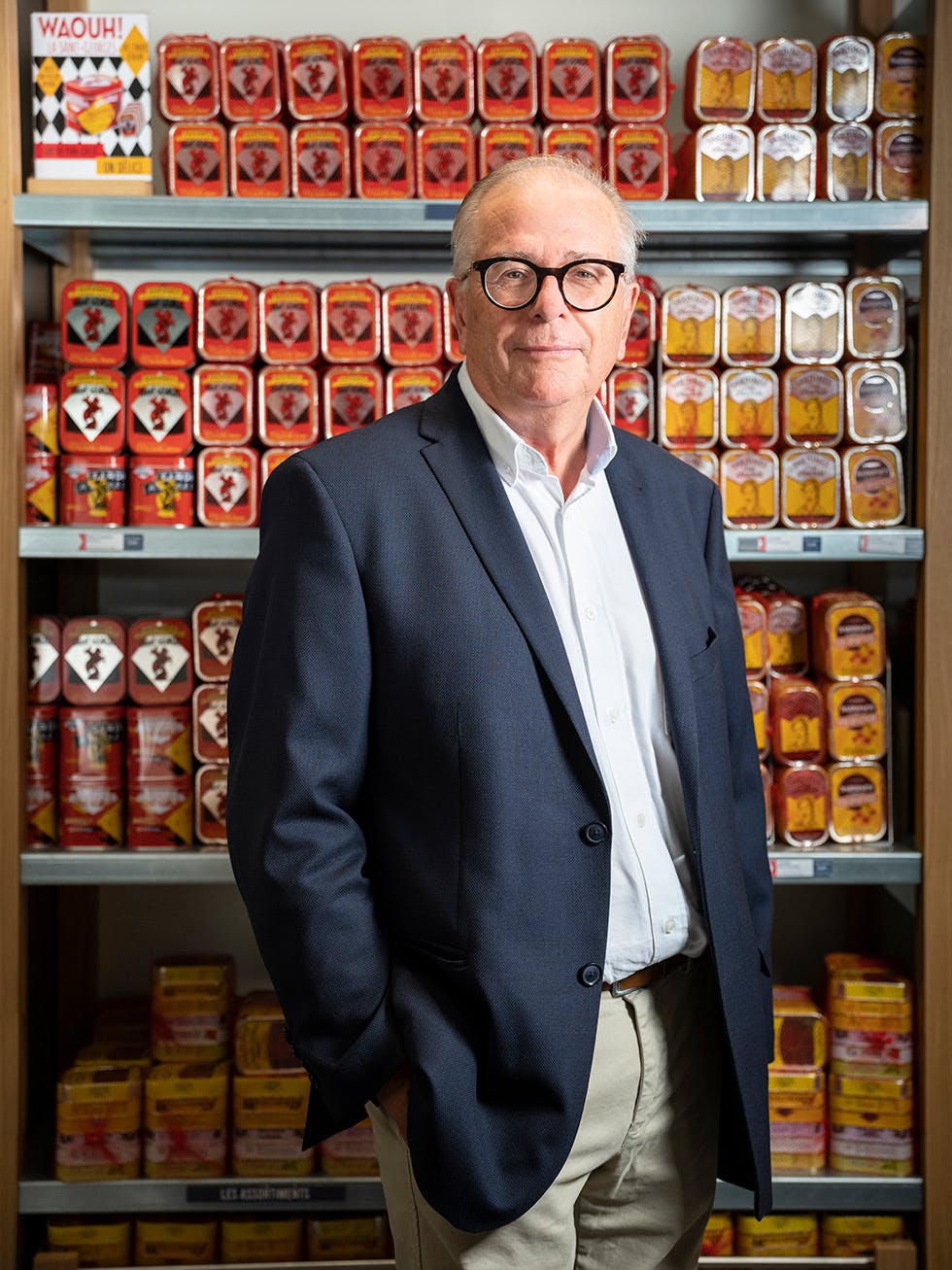
Bernard Hilliet, in a store, in front of a wall full of tins of ouriconic Saint-Georges sardines.
- How did you and your brother choose the location of your first stores?
It was nothing more than intuition!And sometimes, chance. When my father retired, he got a payout from an insurance policy he had taken out, which he wanted to invest in real estate. As such, he bought a little house opposite the tourist office in Carnac, precisely where the store is today. When he bought it, the building had a small 15m² food store along with the home of the person running it.
Whenwe saw the location with my brother, we asked our father:
“But what are you planning on doing with it?”
“Well, I’m going to rent it out!” he replied.
“Wouldn’t you prefer to rent it out to us instead?”
My brother and I said to ourselves, “Hey, we should try something here. Let’s put it to the test!”
My brother brought all the metal furniture he had collected in Lorient, and we used them to furnish the interior. It really wasa hand-me-down look with bric-a-brac decoration. Quite the image! But we made do with what we had without spending too much.
And there you have it, the second la belle-iloise store: the first outside the Quiberon factory.

The Carnac store and its beginnings.
By the 1970s, all the canneries were shutting down –including the last one in Le Croisic, which used to have direct sales from its offices. That’s when we received a call: “Listen, Le Croisic has always been a great sardine port; we used to have so many factories.The last one has just shut up shop. Fancy coming? Go on!” And off we went, opening a store there –our third.
As the three stores were doing well, we said: “Well, we’ll have to start expanding.” And we asked ourselves, “Where shall we go? La Baule?” So we opened a store in Pouliguen because it was the nearest fishing port to us, and we were adamant about keeping close ties with fishers.
We are people of the sea; it’s where we were born, and fresh fish, is what la belle-iloise offered. So we looked for shop locations in fishing ports where we felt most legitimate.
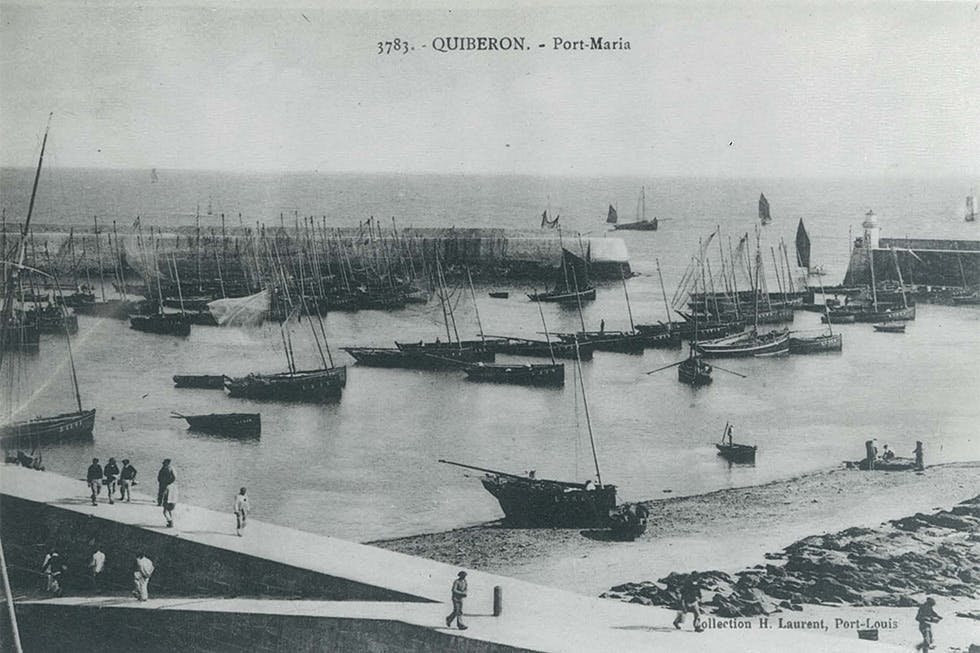
Last century, Port-Maria was one of France’s leading sardine ports with the Port of Rosmeur in Douarnenez.
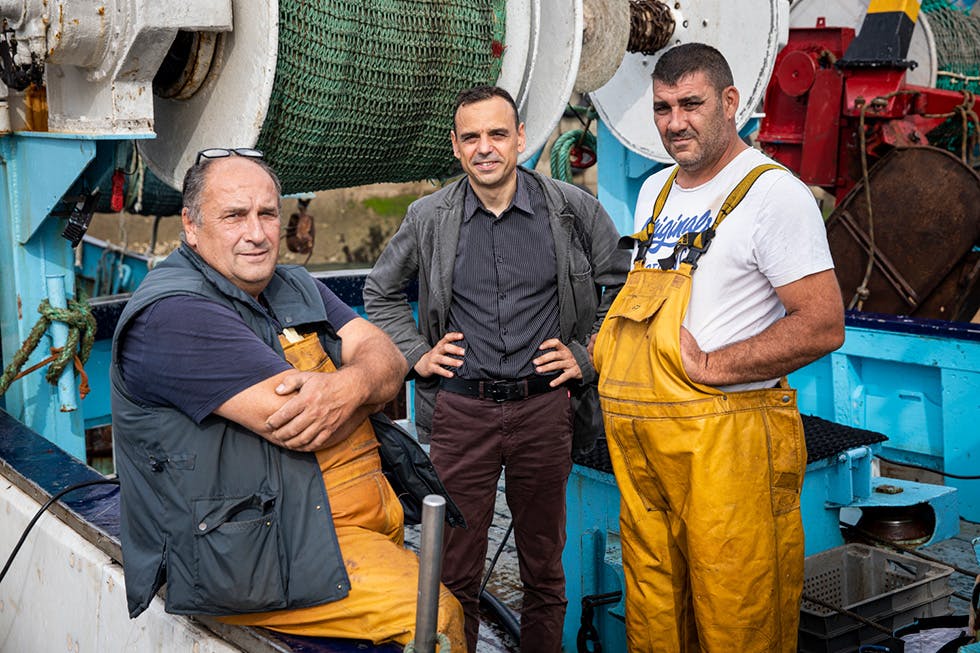
The fishers in Quiberon, la belle-iloise partners since the very beginning. Christophe Lachenays, Procurement Manager at la belle-iloise, with Thierry Guérin and Julien Brière, the respective skippers of the Marisis and New Look boats.
With this idea, we created a network of stores along the Atlantic coast, first in Brittany, then the Pays de la Loire, and then we headed off to conquer the Grand Ouest region.
We went right up to the English Channel: Deauville, Dieppe, Le Touquet and so on. And then we headed down to the southwest of France: first La Rochelle, then Saint-Jean-de-Luz. We even took the huge gamble that is the Mediterranean coast.
We had to go to the cities, get a feel for them, explore the terrain, understand local aspects, and so on. We went by car with my wife, Martine, who drove while I focused on my work. We perused the areas looking for the perfect spot. In Le Touquet, it was my wife who found it. While driving slowly through the town centre, Martine cried out, “Look at that store on the corner. It’s great!”
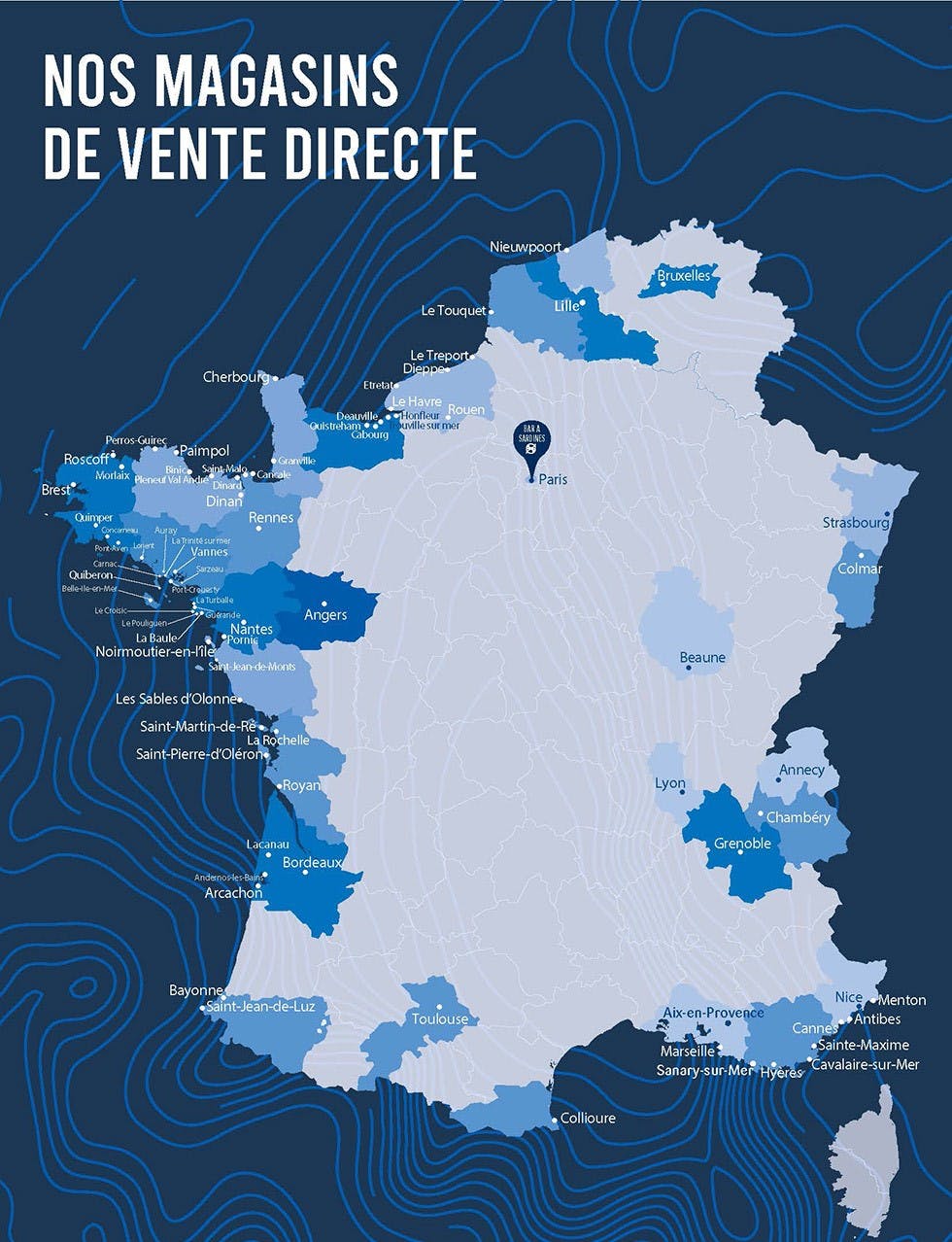
La belle-iloise now has 90 stores across the French coast and in major cities
- What did the first window displays look like in the la belle-iloise stores?
With the first stores, 85% of la belle-iloise’s produce was tinned sardines, and we only had seven or eight different specialities. So for the storefronts, we created piles of tins, huge piles even! We wanted to give the impression of abundance, goods aplenty so that passers-by would say: “Oh, that’s definitely a manufacturer. Look at everything there is inside!”(Laughter)
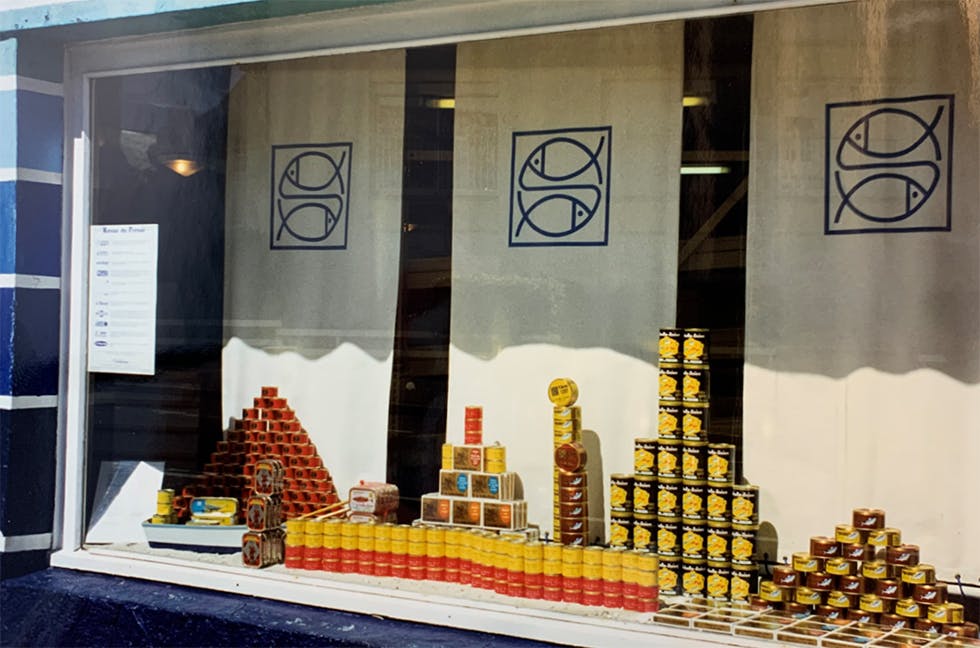
The first la belle-iloise window displays and their pyramids of tasty, tinned fish.
In fact, those first pyramids of tins, one on top of the other, were our inspiration for the vertical displays. That’s how the walls of brightly coloured tins came about, which you find in all la belle-iloise stores today.

Our legendary walls of brightly coloured tins in our 90 stores.
I created the window display in the Port-Maria store for a long time, and it remained in place all year round. It was a tiny space, and I put piles of tins everywhere. I would take two or three hours out of my working day and then return to production.
The store had a doorbell. You see, outside the summer months and Easter, there wasn’t a lot of custom, so no salesperson: we were open, but you had to ring the bell. Whoever was in the office would go. At the time, there were four of us: an accountant, a secretary, my brother and I –and we would each go in turn!
- What do the la belle-iloise stores embody now?
A la belle-iloise store must depict the world of the cannery, its values and its products. The store has been designed so that our customers understand our history and who we are, consciously or unconsciously. How we greet and engage with customers is incredibly important: our salespeople recommend recipes and explain how people can use products, which is vital.
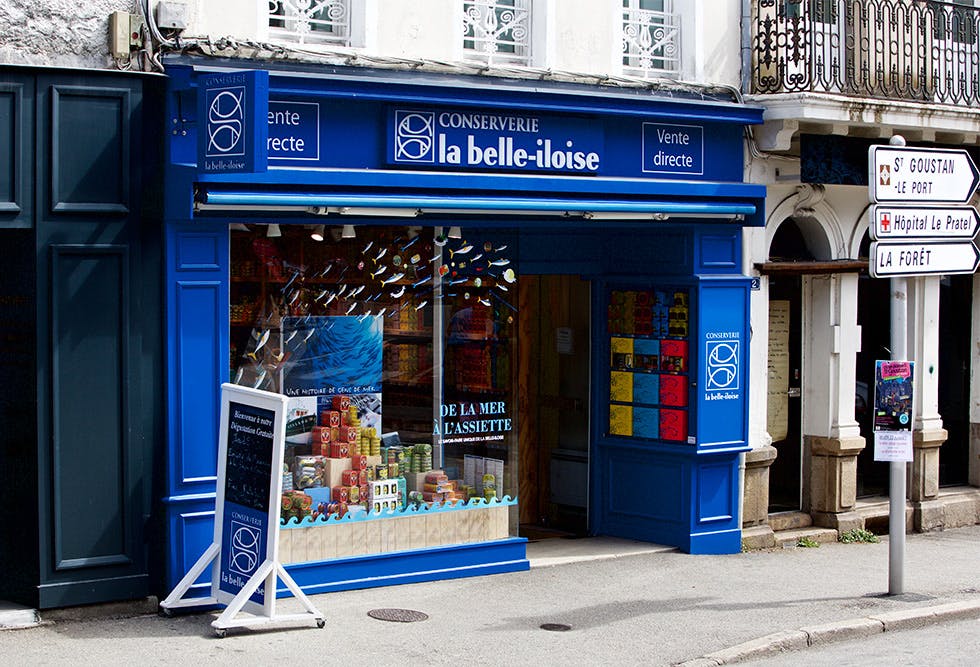
The Auray store near the old fishing port of Saint-Goustan.
- Do you have a favourite store?
I’m fond of the Port Maria store, our first store, which my father opened. Since the store revamp, I find it even better! But there are others, of course. I really like the Trinité-sur-Mer store: it’s on the port and has a stunning view.
Generally speaking, it’s the location of the store, the store itself and the interior that make it what it is.

Inside the Port-Maria store, shop-side
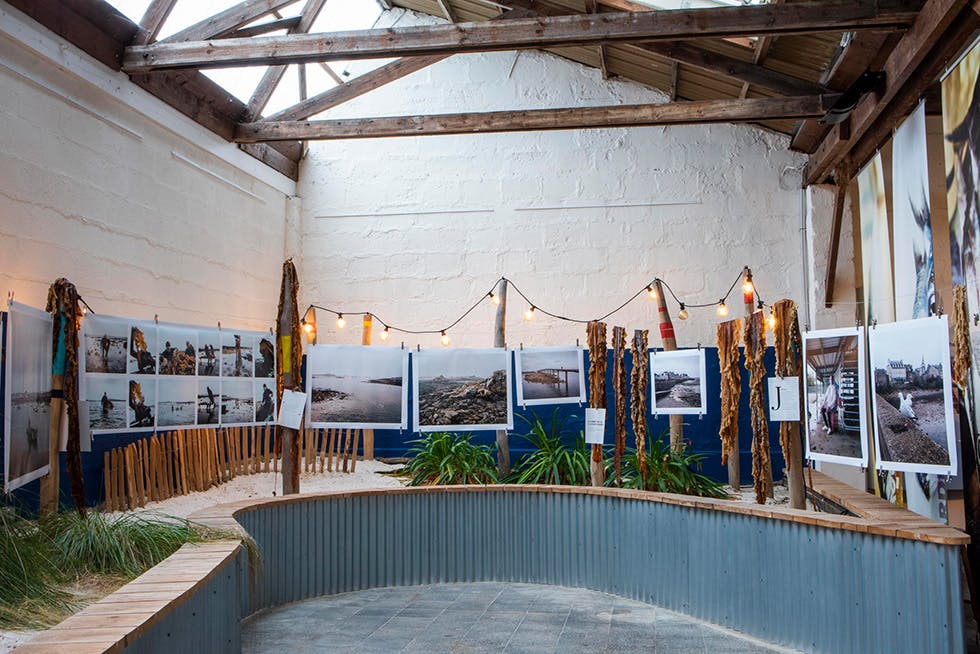
Inside the Port-Maria store, garden-side, with its display area
EATING WELL
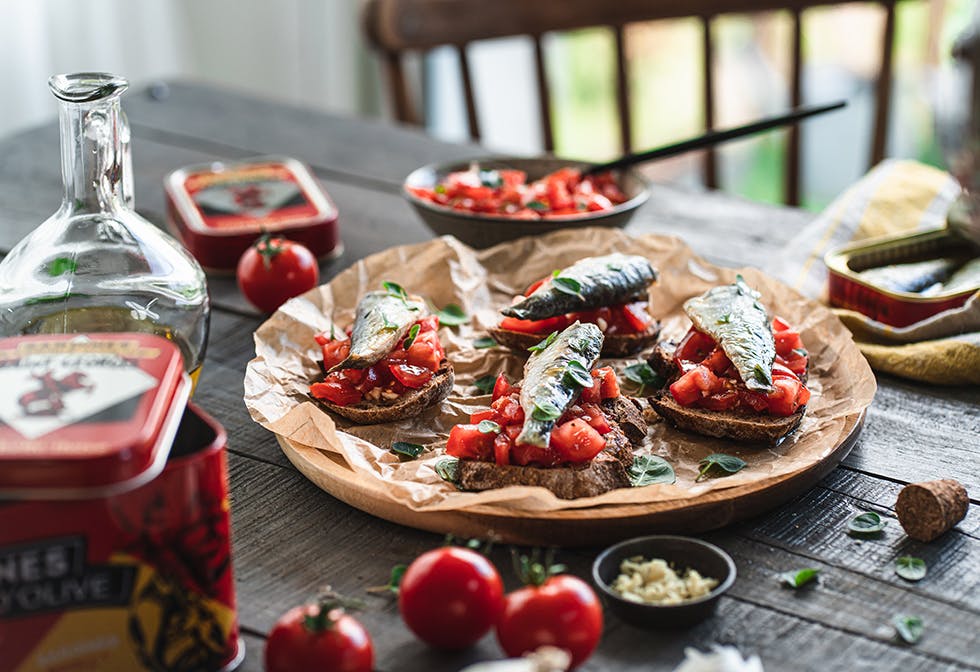
Saint-Georges sardines on toast, a simple and healthy treat
- What does eating well mean to you?
One of the principal elements of eating well is being in good company. If I have to eat alone, I will, but I take no pleasure in it because there’s no notion of sharing around the dinner table.
The other important thing is the quality of the product and, by extension, its benefits for your health. It’s about doing things well, with due care. For la belle-iloise, that means making good food by handling the fresh fish –caught a matter of hours earlier —with the respect it is due before canning.
Our products are even healthier as we process oily fish —sardines, mackerel and tuna, which are extremely good for your health, to put it simply. We already talked about eating well in my brother's first letters to our customers at the turn of the 1980s. I think it’s a very good thing that la belle-iloise continues in this vein today, raising awareness about it.
- What’s your favourite la belle-iloise recipe?
I’ve spent so many years in the world of sardines that it’s my favourite fish, of course. I am a die-hard fan of sardines with spices and aromatic flavourings. They are just divine! A sardine like that with boiled new potatoes is just amazing.
I also enjoy theSaint-Georges sardinesjust as much as ever before. At home, I tend to leave them to age. For me, the tin needs to be at least five or six years old. I even have tins that are ten years old, and let me assure you, the result is quite something!
In my view, all tinned fish in oil get better over time –like a good wine is even better after four years. With tinned fish in oil, it’s exactly the same!

FAMILY
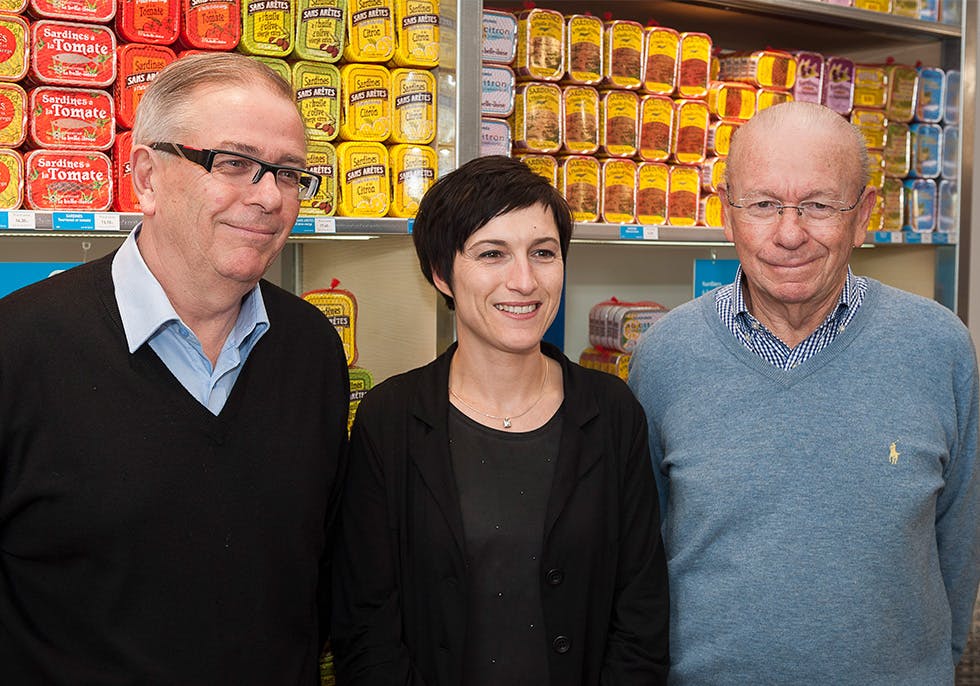
Caroline Hilliet Le Branchu, flanked by her father, Bernard, and her uncle, Georges
- You’ve worked with your father, brother, wife, nephews and daughters. What’s it like working with family? What does it bring?
Working with family is about working very closely, with trust and love too. It’s an extremely interesting exercise to try out.
For example, I saw another side to my father in the factory, a very different person from the one I knew at home. It brought us together a lot, and I drew a great deal of pleasure workingwith him. My wife, Martine, also joined the company for a time. She supported me every day and was my rock throughout my career, both at work and at home.
Whether working with my father, brother, wife, nephews or daughters, working together has been a force. We are a tight-knit family, forging ahead in the same direction, agreeing about who we are and what we want. La belle-iloise has been handed down from generation to generation with such immense respect, tremendous amounts of trust, and lots of love. That’s how the pack gets ahead! (Laughter)
BRITTANY
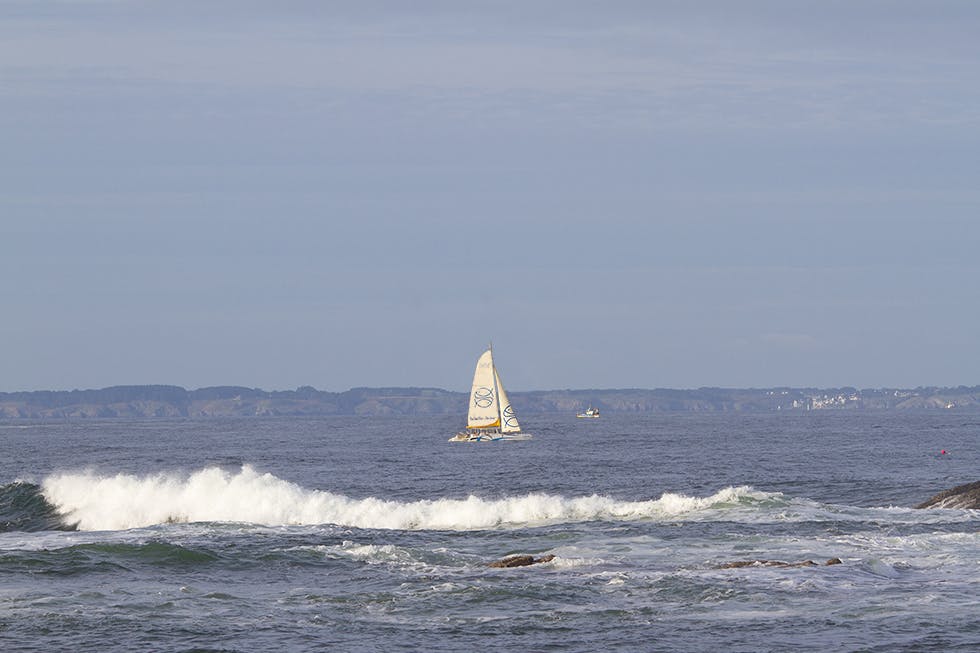
- You’re what we could call a true Breton.What does it mean to be Breton?What does it bring?
Brittany has a robust, age-old history and a genuine culture of which it can be proud. It conveys the values that I see in myself. If I had to illustrate the spirit of Brittany, I would choose the Penn Sardin, “sardine heads” in Breton. That’s how we referred to the people of Douarnenez at the time.
This expression refers to the strong-willed character of the Bretons and their stubborn side. The people of Brittany know what they want, and are ready to do what it takes to get there. They give it their all without asking questions and put in all the effort required. I love that mindset. It means you can go further in life.
CHRISTMAS
- Next week, the 90 la belle-iloise stores will switch to Christmas mode.Do you remember what your first Christmas window display looked like?
I remember very well! For a very long time, sales stopped in all of our stores on All Saints’ Day in November. After that, we’d head into a very quiet period given that our stores were in seaside resorts in the off-peak season. At Christmas, there were next to no tourists passing through.
Ourmail-order servicesand catalogues gave our Christmas sales a real boost. We would write to our customers far away from our stores to wish them a festive holiday season, and it was the perfect opportunity to recommend our gift boxes
We ended up transposing this into our stores: we decorated the storefronts with tinsel and very basic decorations, and the sardine gift boxes were a success! Today, Christmas is a key period in the year for la belle-iloise. Our customers enjoy offering our products, sharing them with others, placing our gift boxes under the Christmas tree, and enjoying our tins on Christmas Eve. They’re not your ordinary presents, and are a hit!
- What do Christmas and the new year festivities mean to you?
I love it when the holiday season is upon us. At home, it’s quite the family tradition! Everyone is there for several days, all dressed up to the nines: my four children, my ten grandchildren, cousins, nieces and nephews, and so on. We spend three days together, with huge meals and incredible dishes, and it never stops! When my parents were around, it was the same. Christmas is a great tradition that we pass on from one generation to the next.
